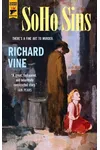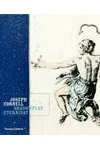Picture an American scholar who swapped art galleries for gritty crime scenes—meet Richard Vine! A renowned art critic turned novelist, Vine blends his deep knowledge of the art world with the pulse-pounding thrills of hard-boiled fiction. His debut, SoHo Sins, introduced a fresh voice in crime literature, proving that a life spent curating exhibitions can inspire tales as dark and captivating as any noir masterpiece.
With a Ph.D. in literature and a global reputation in art history, Vine’s journey from academia to fiction is as intriguing as his stories. His unique perspective, shaped by diverse experiences like working in steel mills and curating shows in China, makes him a storyteller to watch. Ready to dive into his world? Let’s explore how Richard Vine became a literary force.
The Making of Richard Vine
Born and raised in America, Richard Vine’s passion for art and storytelling took root early. His academic journey led him to the University of Chicago, where he earned a Ph.D. in literature, complementing his studies in art history. Before picking up the novelist’s pen, Vine built a formidable career as an art critic, serving as managing editor of Art in America and curating exhibitions across continents, from India to Iceland. These experiences, coupled with stints in steel mills and a psychiatric ward, gave him a rich tapestry of human struggle and creativity to draw from.
Vine’s global travels and eclectic background fueled his curiosity about the darker corners of human nature. His shift to fiction wasn’t a leap but a natural evolution, as he began to see the art world’s underbelly as the perfect backdrop for crime stories. By 2016, he was ready to unveil his first novel, setting the stage for a thrilling new chapter.
Richard Vine’s Unforgettable Stories
Vine’s debut, SoHo Sins (2016), is a noir gem set in the New York art scene of the late 1980s and early ’90s. Published as part of the iconic Hard Case Crime series, it follows a murder mystery that weaves art-world intrigue with gritty suspense. Vine’s insider knowledge shines, revealing the corruption and ambition lurking behind gallery walls. Critics praised its fresh take on mystery tropes, blending classic hard-boiled style with a modern edge.
His second novel, still in development, tackles the 1970 Kent State shootings, a tragedy Vine witnessed as a student. This ambitious project promises to merge historical drama with his signature crime-novel flair, showcasing his ability to tackle weighty themes. Vine’s writing style is sharp and atmospheric, with vivid prose that pulls readers into morally gray worlds. His themes often explore betrayal, ambition, and the collision of art and crime, reflecting his dual expertise.
Whether he’s crafting a cynical detective or a flawed artist, Vine’s characters feel real, grounded by his diverse life experiences. His ability to play with genre conventions while staying true to noir’s roots has earned him a growing fanbase, eager for more tales from his unique perspective.
Why Richard Vine Matters
Richard Vine’s impact lies in his ability to bridge two worlds: the refined sphere of art history and the raw energy of crime fiction. By setting his stories in the art world, he exposes its darker side, making it accessible and thrilling for readers who might never step into a gallery. His work adds a fresh layer to the crime genre, proving that intellectual depth and page-turning suspense can coexist.
As an emerging novelist, Vine’s legacy is still unfolding, but his debut has already carved out a niche. He’s a reminder that reinvention is possible at any stage, inspiring writers to draw from their own lives to create something bold. With more novels on the horizon, Vine is poised to leave a lasting mark on contemporary literature.
- Born: United States
- Key Work: SoHo Sins (2016)
- Notable Role: Managing Editor, Art in America
- Education: Ph.D. in Literature, University of Chicago
Snag SoHo Sins and dive into Richard Vine’s thrilling blend of art and crime! Whether you’re a noir fanatic or an art lover, his stories will keep you hooked from the first page.

